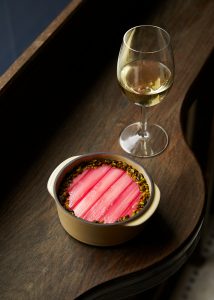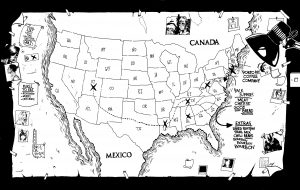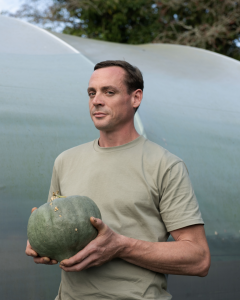Walter Riddell, landlord of the Hepple Estate in the Northumberland National Park and one of the co-founders of Hepple Spirits, speaks to Port about his enthusiasm for gin’s essential ingredient
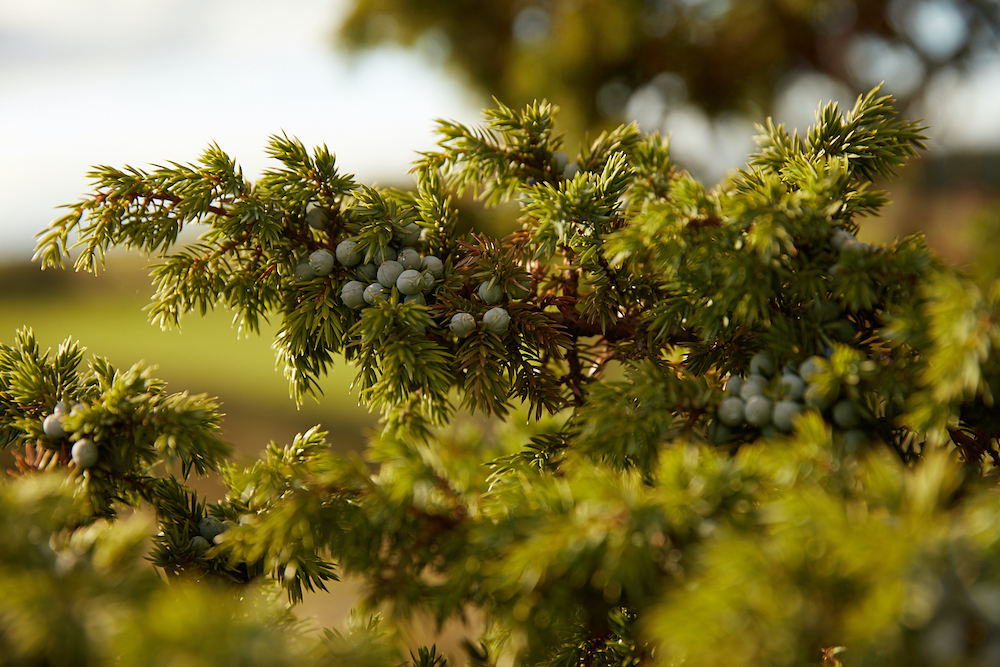
Juniper was a medicine before it was a spirit. Like many of our most important herbs it has important qualities. It’s a diuretic, for example, and it cleanses the kidneys, so it’s been used for its medicinal properties even by the Egyptians. Back in the Medieval period, to create medicines they would put juniper in a nice preservative like alcohol, boil it over an alembic – and there are lovely old pictures of this happening – and you would basically end up with gin. So it really was used initially as medicine. Nick (Strangeway, one of the co-founders of Hepple Spirits) thinks that juniper was first used to make gin because some of the early whiskeys tasted so disgusting, I mean we’re talking about many hundreds of years back, that they thought ‘shit, what can we put in here?!’. But for me the important thing is that juniper has properties, it has lovely oils and esters and terpenes which actually have a proper chemical impact on the body.
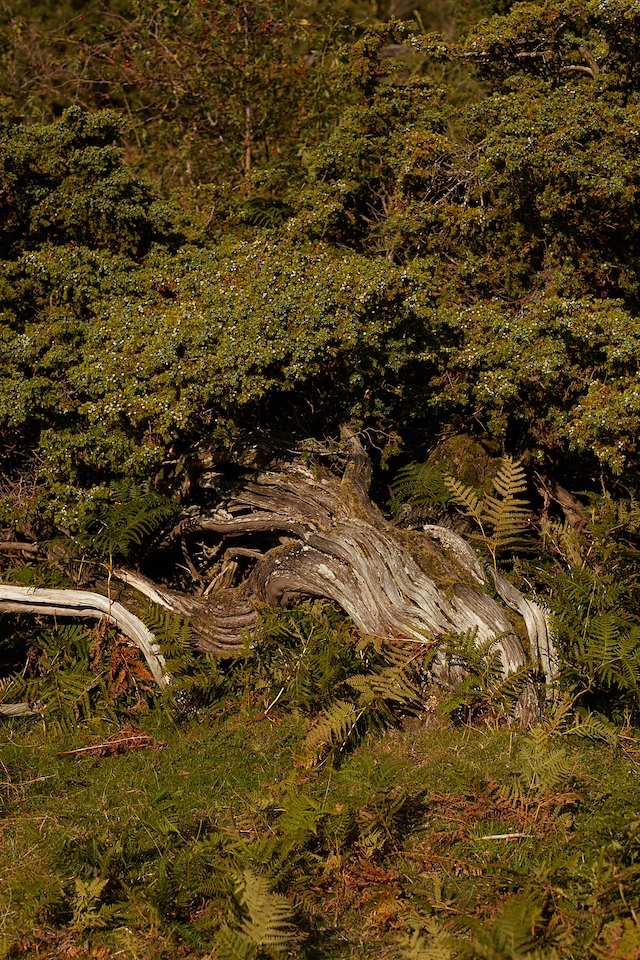
They are really rather cool plants. They’re very good for the environment, they spread across empty moors and fields and help build up little local habitats which support insects and bird life, all sorts of stuff. But it’s not been an easy environment for junipers for probably the last 1000 years in the U.K.. It’s just got harder and harder for them, for various reasons. But Hepple Estate is a good juniper place. It’s unusual in that it’s a heath on top of limestone so the water comes out alkaline, which is very rare and what I think has helped keep the juniper here. As has many hundreds of years of gentle farming; Hepple covers an area of about 4,000 acres and a lot of it is still quite wild and untouched. The ultimate authority on the land is Natural England and because we’re in a special area of conservation we need to be very careful. All the junipers planted up here are done in agreement with Natural England, as is the harvesting, and we work very deeply with them and the National Park. They really like the idea of taking something that’s fundamentally wild and endangered in the UK, which is juniper, and looking after it and making something of value from it. And as the landlord I’m able to make something which celebrates these otherwise completely uncelebrated bushes.
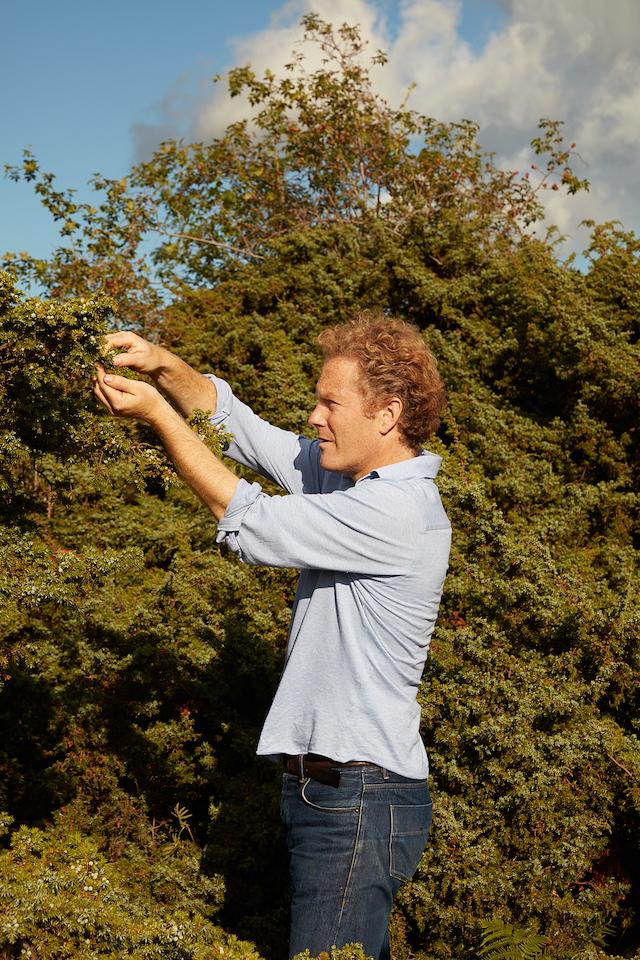
Juniper is what’s called a dioecious plant which means that they’re male and female. You can tell when it’s a male juniper because it hasn’t got anything on it at all, just needles, which is no use to us at Hepple Spirits. With a female you can see the berries on it very clearly and it’s these berries that make the flavour of gin. You can’t make gin without juniper. It will take 15 years before they are ready to produce a green berry and then another year, so 16 years on average, to get a ripe purple berry. That’s when we harvest. The green berry goes into one bucket, and that’s what we’ll distill, and the ripe purple juniper goes into a different bucket to be put back in the ground where it will take two winters to germinate. So what I’m saying is the life cycle of juniper is really slow. That’s nice because everything about gin, supposedly, is really fast. You know, people come up with new ideas all the time and they’re building gin companies on a Monday and they’ve sold it by a Friday. But we’re very grounded in the raw ingredients; the pulse of this place is very slow just like the way juniper grows is very slow. Many of the old ladies here at Hepple are probably about 200 or so years old, some are more like 300 or 350, and that’s why we’re replanting young ones at the moment, as the fertility of the old bushes goes down dramatically as they get older. An old bush has about an 8 to 10 percent fertility rate on their berries whereas a young bush will have like 80 to 90 percent fertility rate. But age is no limit, we took a harvest about three years ago off a 200 year old bush and it was absolutely perfect.
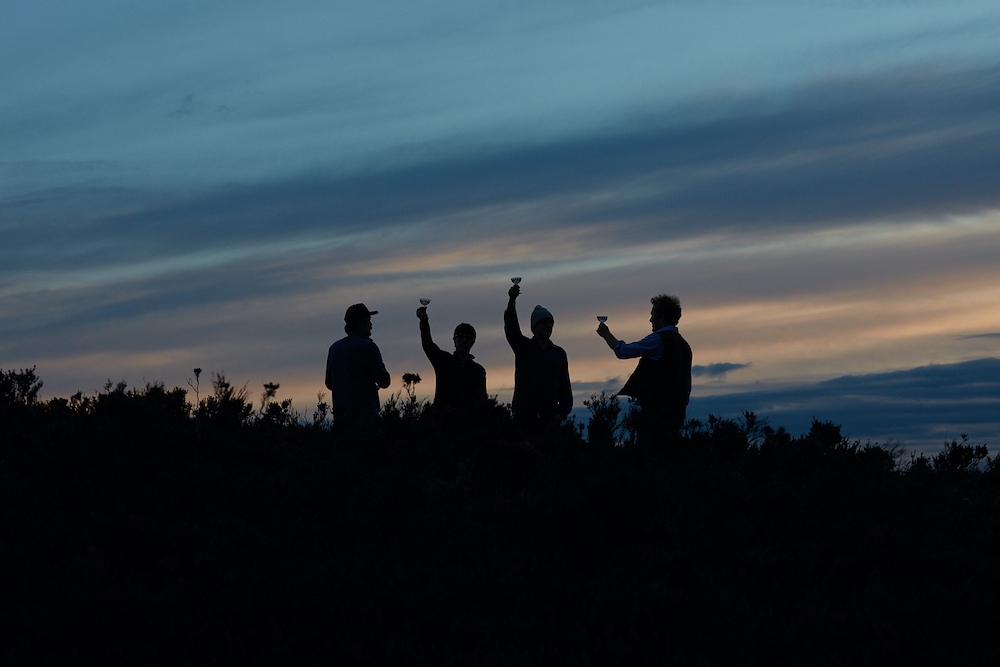
There’s rather a romantic answer to the question of what juniper tastes like, which is ‘it’s the fresh breath from the mountains’. So it’s you know the way mint is refreshing but it’s cold? Juniper is the same, yet it’s totally unlike mint. It has a very refreshing taste, but it doesn’t rip your mouth out like peppermint does. There’s also a slightly sort of sandalwood scent to it and that’s because it’s part of the cedar family, in a wide way. I don’t know how to put it other than that: it tastes unusual, sandalwoody, and cold. So the taste that we want in Hepple Gin is that distinctly different and bright fresh flavour that we get from the green berries. Every gin distillery in the world is using the ripe purple berries and nearly every single gin distillery in the UK is using berries from overseas. At Hepple we’re actually picking them when they’re still green and still fresh, and we’re the only distillery in the world doing that. If you asked yourself what you want out of your gin, I suspect many people would say I just want it to taste really fresh, really invigorating. Gin is all about being uplifted and having a dance. As we’re so close to the distillery, which is on the land, we can also pick the berries when they’re fresh and distill them quickly. We do mix them with various other berries and botanicals as well but this is the holy centre of the ingredient list: the green juniper berry.
For the Miriam Gin, which was made with and named after one of the oldest junipers at Hepple, we actually used all the different parts of the tree. The green and purple berries, the needles, even the bark. It gave the gin a very different taste, almost like a whiskey. On the west coast of Scotland people used to burn juniper, which releases this extraordinary incense and smell, to deal with their witch and warlock problems. If you cook over it you also get this incredible incense, it’s an extraordinary and lovely sandalwood smell. In gin making about four or five years ago there was a big thing about finishing gin by putting it into a whiskey barrel. But if whiskey is a warm flavour and gin is a cold flavour then you don’t really want to mix the hot and the cold because you’ll just get a lukewarm result. The light sandalwood, incense flavours that you get from the bark just work so much better with that cold, bright flavour of juniper berries. And if you use the supercritical extraction like we do in the distillery, which was previously used in the perfume industry, you can get nearly the exact same chemicals out of the needles as you can from the berries, which sort of amplifies the berries even more. It’s just a complete picture of a very particular, very beautiful old lady.
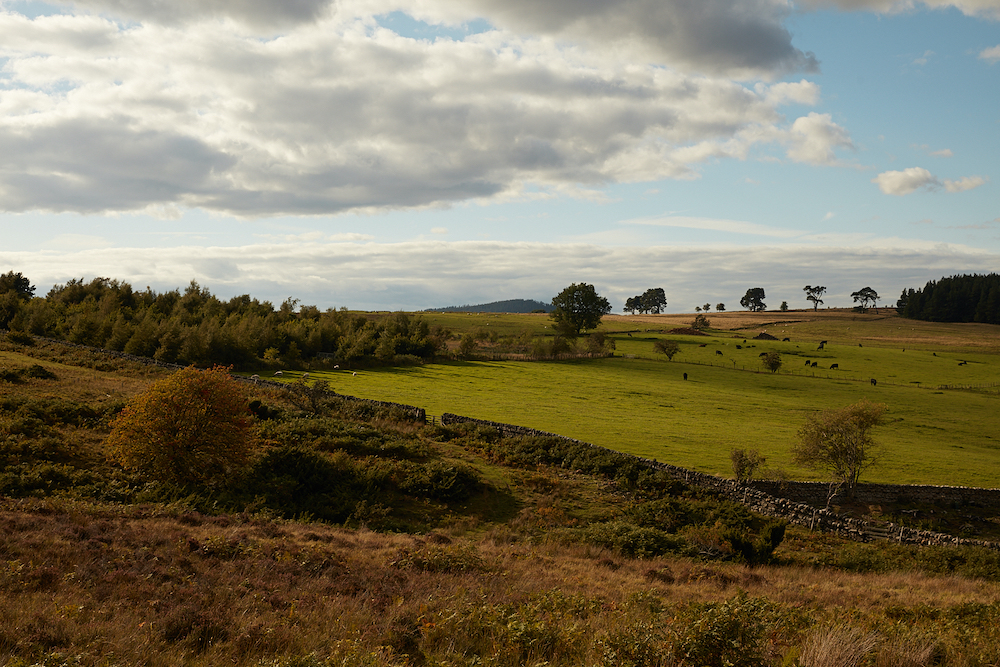
Because we don’t want to addle these flavours with lots of weird things we love our gin with a light tonic. It’s just this essence of cleanliness. But if you want the ultimate treat, then that would be a gin martini. It’s deeply indulgent, you have to be very careful, but it’s an absolutely perfect pool of cold that you just dive into. All the refreshing light mountain air, an element of juniper, is in that flavour. Serve it very cold and serve a very small amount of it, and with an olive if you like that sort thing and the saltiness will bring out additional flavours. When I was young my dad, who hardly ever drank, would take me to the sea and we would have, or he would have, a gin martini, and it was always seen as the ultimate treat. You can have a nostalgic hit from the food and drink, the aromas of anything are just so deeply stimulating to our memory, they can take you straight back, and for me if you get the distillation right to bring out all the flavour of juniper, like we do at Hepple, you should be transported back to the place where the juniper came from. For me, a martini with Hepple will get you here. I’m kind of biased but I’m also very sensitive to what an incomplete transport means. It means being left at the bar, basically. And I want to come here.
As the “Keeper & Cultivator of the Land” at Hepple Spirits Walter Riddell is responsible for the sustainable propagation of the Hepple Estate’s wild juniper, which is the main ingredient in the brand’s craft gin
All photography Tom Bunning

